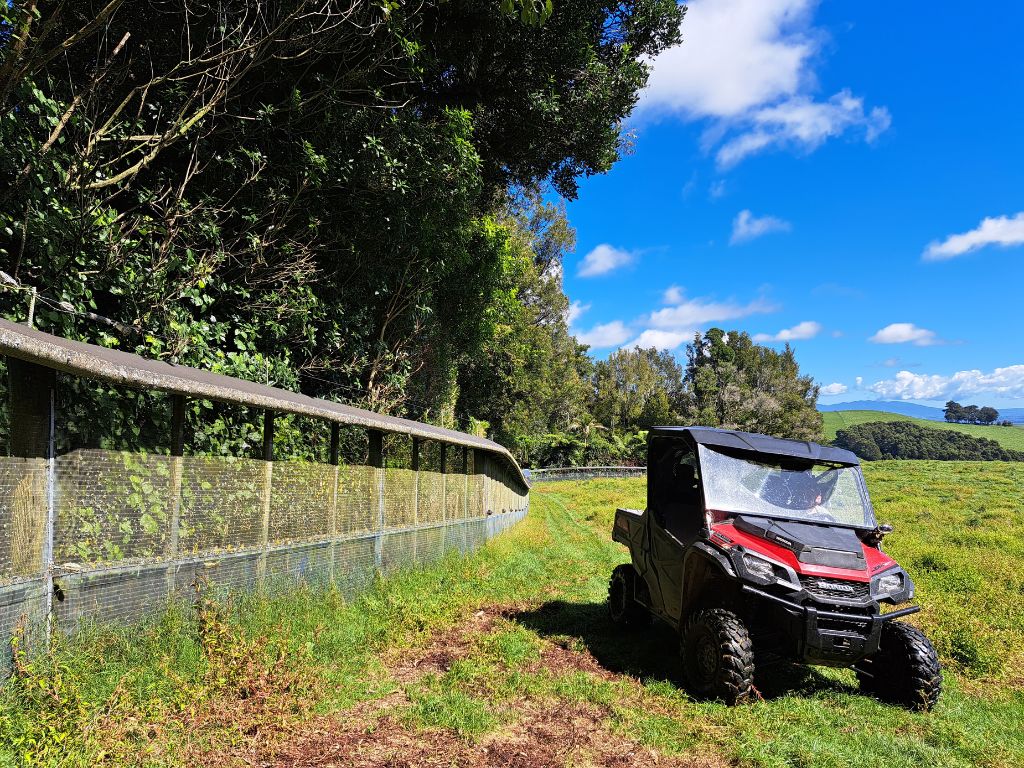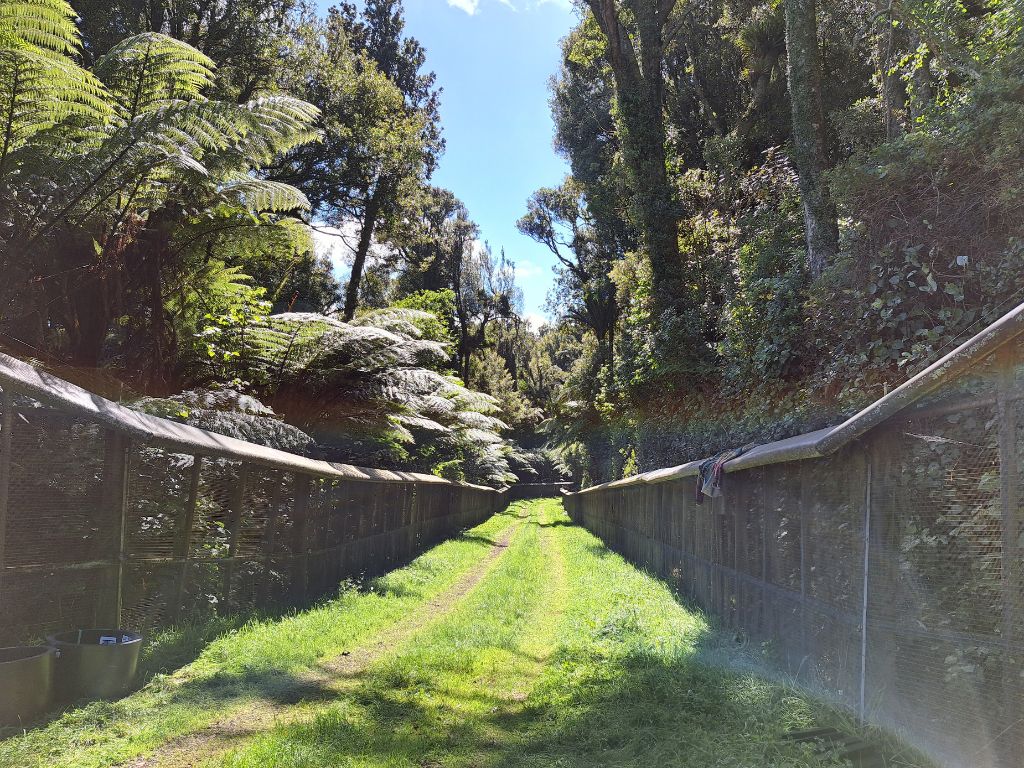From finding a wandering kākāpō to fending off a kārearea (falcon), life near an ecosanctuary comes with unforgettable wildlife encounters – and big responsibilities.

Before the fence: a farm with good roots
Long before the predator-proof fence went up at Sanctuary Mountain Maungatautari, farmer Bill Garland had QEII National Trust protection on his property and was doing restoration and predator control.
“We’ve done possum control here for many years, even before Maungatautari was fenced. We’ve got so many fragments of bush, and they are part of the character of the farm,” Bill says.
His sheep and beef farm, Rahiri, now shares 8km of the sanctuary’s 47km boundary fence. Around 30 hectares of his QEII covenanted land lies within the sanctuary itself.
The sanctuary next door
With the predator free sanctuary established and hundreds of native species living next door, Bill and his family have had some epic wildlife experiences on their farm, including finding a wandering kākāpō on his farmland when kākāpō were making daring escapes from the sanctuary.
“I’ve slept in our bush a couple of times and listened to the dawn chorus. It’s almost deafening, which you never would have heard before.
“There are tīeke (saddleback) outside the fence, toutouwai (North Island robins), miromiro (tomtit), as well as all the korimako (bellbirds), tūī and kererū.
We’ve seen an increase in kārearea (falcon), and we’ve got pekapeka (bat) pretty much over the whole farm.”
He must be one of the few farmers to have had an escaped kākāpō wandering his property, and even being gashed on the top of his head by an angry kārearea (falcon) wasn’t entirely negative.
“I didn’t mind really. It hurt, but it was pretty cool to have a falcon chase you away from its nesting site.”

Landowners play a big role
Don Scarlet, co-chair at Maungatautari Ecological Island Trust (MEIT), the operators of Sanctuary Mountain Maungatautari, says the role of landowners and QEII covenantors is crucial for the success of ecosanctuaries and the halo projects that surround them.
He says Bill Garland’s covenant, located within the sanctuary boundary, gave MEIT the confidence to build the fence, knowing the land was permanently protected.
Other private land within the fence has also been covenanted.

Don adds that covenants outside the fence’s halo zone help anchor conservation efforts in those areas.
These include the B2B (Bush to Burbs) project to create safe wildlife corridors from Maungatautari northwards towards Cambridge and the eco-corridor between Maungatautari and Pirongia Forest Park to the west.
“People see those covenants there, and neighbours start thinking they should take part too.
“Even if they don’t covenant land themselves, they want to do some work to help with the community vision,” Don says.
Conservation that works – and benefits – farmers
Bill Garland says covenantors benefit from being part of a broader project or group.
The most challenging issue for farmers is not so much the initial capital cost of fencing as ongoing monitoring and maintenance. The protection work he has done on his farm has always aimed at commercial and conservation benefits.
Fencing, for example, can be done to make mustering more efficient.
“I also think there’s a huge opportunity in New Zealand agriculture to sell the conservation story because a lot of farmers are doing it, and a lot of farmers have increased the biodiversity on their properties, and that’s got to be a selling point.”
He says he has treasured the experience of protecting his bush and living next to the sanctuary. Experts and student groups who have visited his property have enriched his knowledge of nature and his land.
“It’s like living next to a university and being able to pop in and out of lectures all the time,” he says.
This story was originally published, in part, in the May 2024 issue of QEII National Trust’s Open Space magazine (PDF, 3.7 MB).

